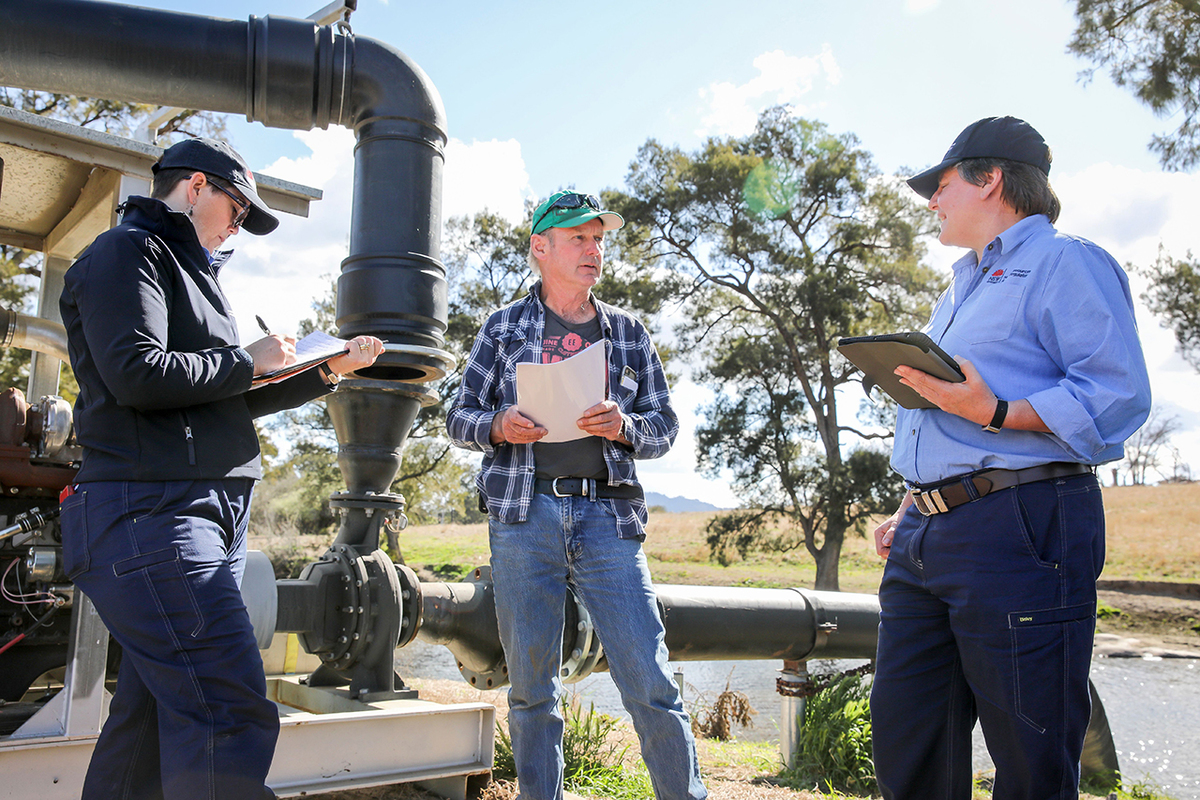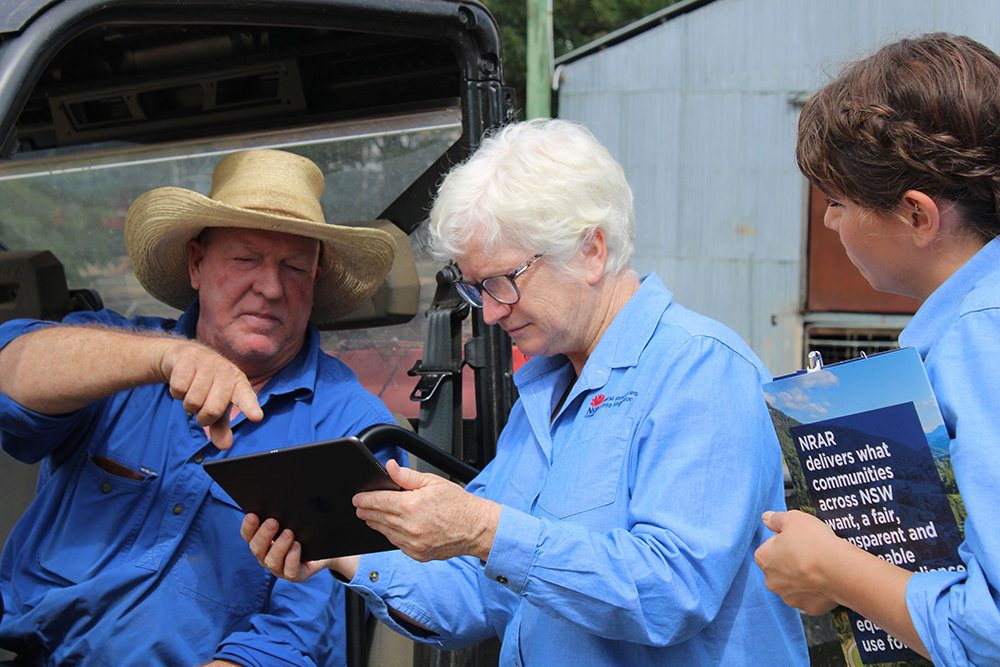Macquarie River Region ranks high in water compliance rates
Oliver Brown
02 May 2021, 2:17 AM
 Natural Resources Access Regulator (NRAR) Officers conducting a site inspection with a water user. PHOTO COURTESY OF NRAR.
Natural Resources Access Regulator (NRAR) Officers conducting a site inspection with a water user. PHOTO COURTESY OF NRAR.THE Macquarie River region and the Coonamble shire have been ranked as above average in The Natural Resources Access Regulator’s (NRAR) routine monitoring program of water compliance rates.
The NRAR pilot program, which commenced on Thursday 1 October 2020, has recently passed its six month milestone and has gathered results on compliance and any common compliance issues from properties and water users across nine valleys of the Murray-Darling Basin.
NRAR’s Director of Regional Water Regulation (East) Gregory Abood said in this time, NRAR Officers had inspected almost 4000 water works, audited more than 2,000 properties and said hello to 1,773 water users.
“What makes this program different is that these sites are selected randomly - our visits aren’t based on intelligence or suspicion,” Mr Abood said.
“This allows us to understand the baseline rate of compliance in the state because there is no bias.”
Mr Abood said he had been really impressed with the progress NRAR Officers had made halfway through the program and had been encouraged by the rate of compliance across most regions.
The highest rate was the Barwon-Darling with 85 per cent compliance and the lowest was the Lachlan with 61 per cent compliance, with an average of over 70 per cent.
Mr Abood said the Macquarie region, which encompasses rivers in several shires, had around a 77 per cent compliance rate.
“We’re encouraged by that rate but there is more work to do to ensure those that don’t comply with the water law actively change to make sure they do,” he said.
“The most common issues we found with compliance related to the metering, logbooks, size of pumps and bores and water ordering.
“One particular common area of non-compliance falls into a category we’ve labelled ‘other’ – this refers to tamper proof seals on metering.”

NRAR Officers conducting a site inspection at Jugiong. PHOTO COURTESY OF NRAR
NRAR’s findings have all been published on the NSW Department of Planning, Industry and Environment’s website in an electronic tracker.
According to this tracker, out of 107 potential offences recorded, the most common offence in the Macquarie region fell into the ‘other’ category.
Mr Abood said NRAR will be commencing further investigations into the serious compliance issues they identified.
“There were some water users with serious breaches, which means more work for them and us to enforce the water law,” Mr Abood said.
“Largely, those who broke the rules did so out of a lack of understanding or awareness - the majority of non-compliances that we detected can be readily corrected.”
The electronic tracker can also identify compliance rates in separate Local Government Areas (LGAs). Of eight routine monitoring inspections, the Coonamble LGA had a 100 per cent compliance rate.
“It is encouraging that NRAR works to identify the compliant as much as it does for those who aren’t compliant,” Mr Abood said.
“We know water laws can seem complex, which is why we’ve put more boots on the ground to meet with water users across the state and help them understand their obligations.”
According to Mr Abood, the program will continue over the next six months until Friday October 1 2021.
During this period, Officers will continue to visit other randomly-selected properties across the nine valleys of the basin including the Macquarie River region.